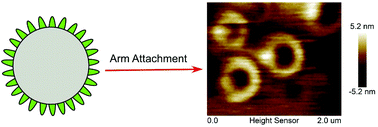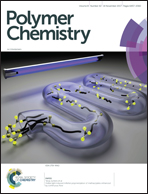Hyperbranched polysiloxane with highly constrained rings and the effect of the attached arms on the assembly behavior†
Abstract
The preparation of hyperbranched polymers with incompatible arms and narrow molecular dispersity is appealing but is hindered by the lack of control of intramolecular cyclization, which usually leads to the formation of inert loops. We succeeded in deliberately directing the intramolecular cyclization into the formation of highly constrained and thus reactive rings, which are then used for arm attachment. In this way, a simple and efficient synthesis of a hyperbranched tri-block polymer with incompatible arms is realized and its potential application in self-assembly is demonstrated with the formation of interesting giant toroid structures.



 Please wait while we load your content...
Please wait while we load your content...